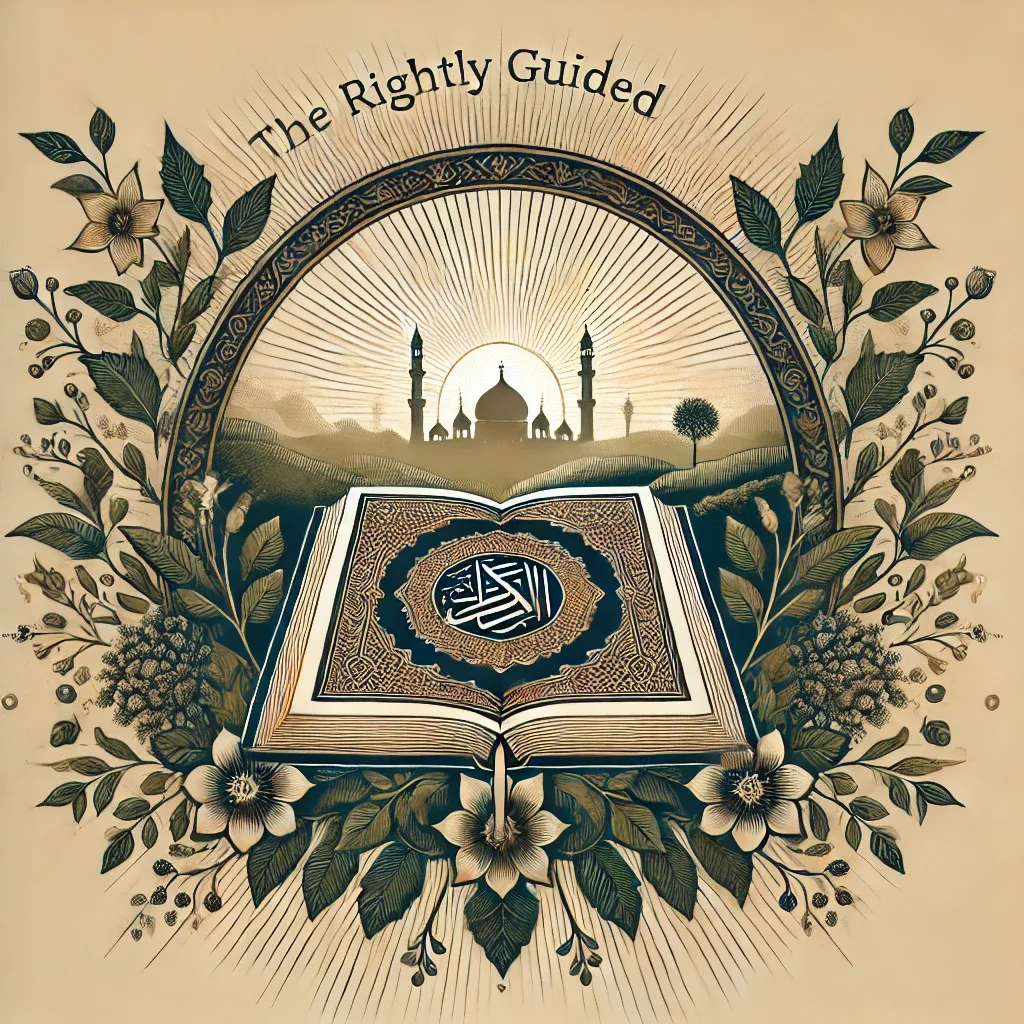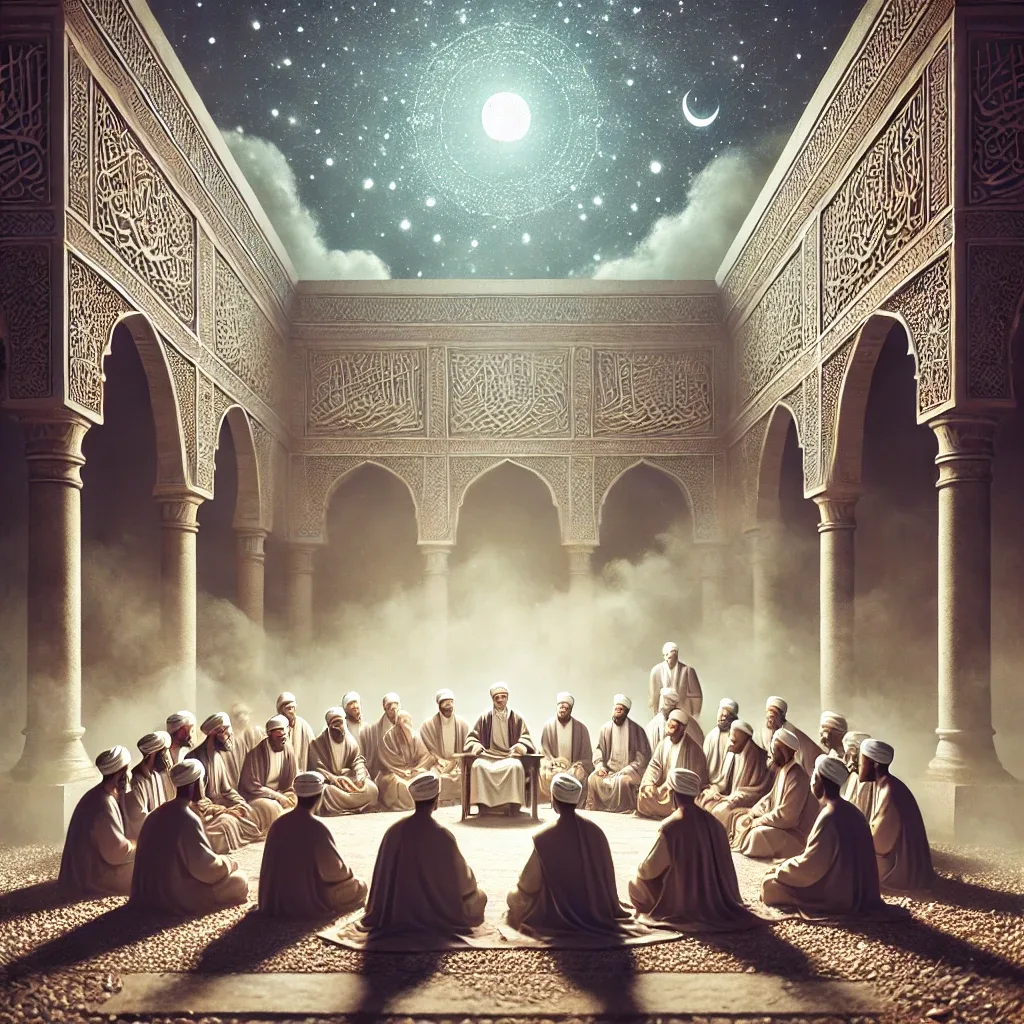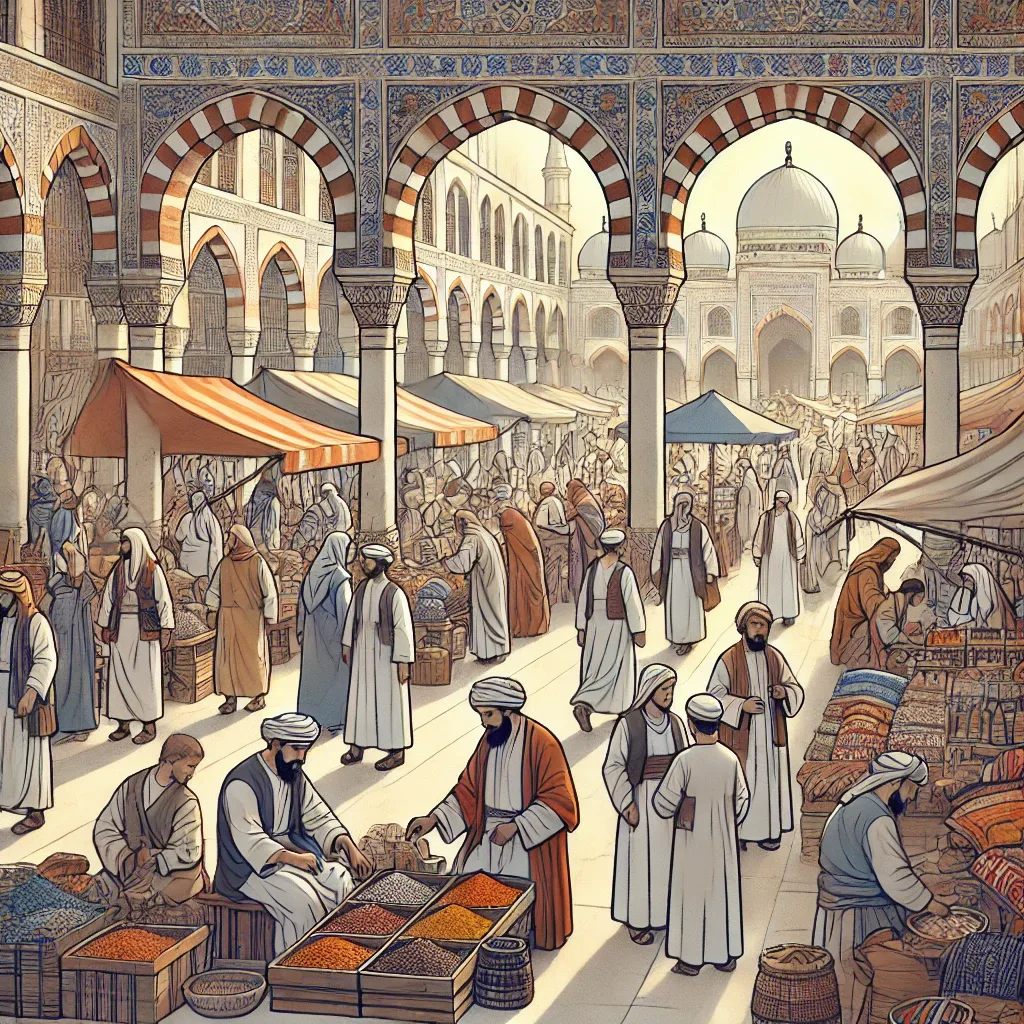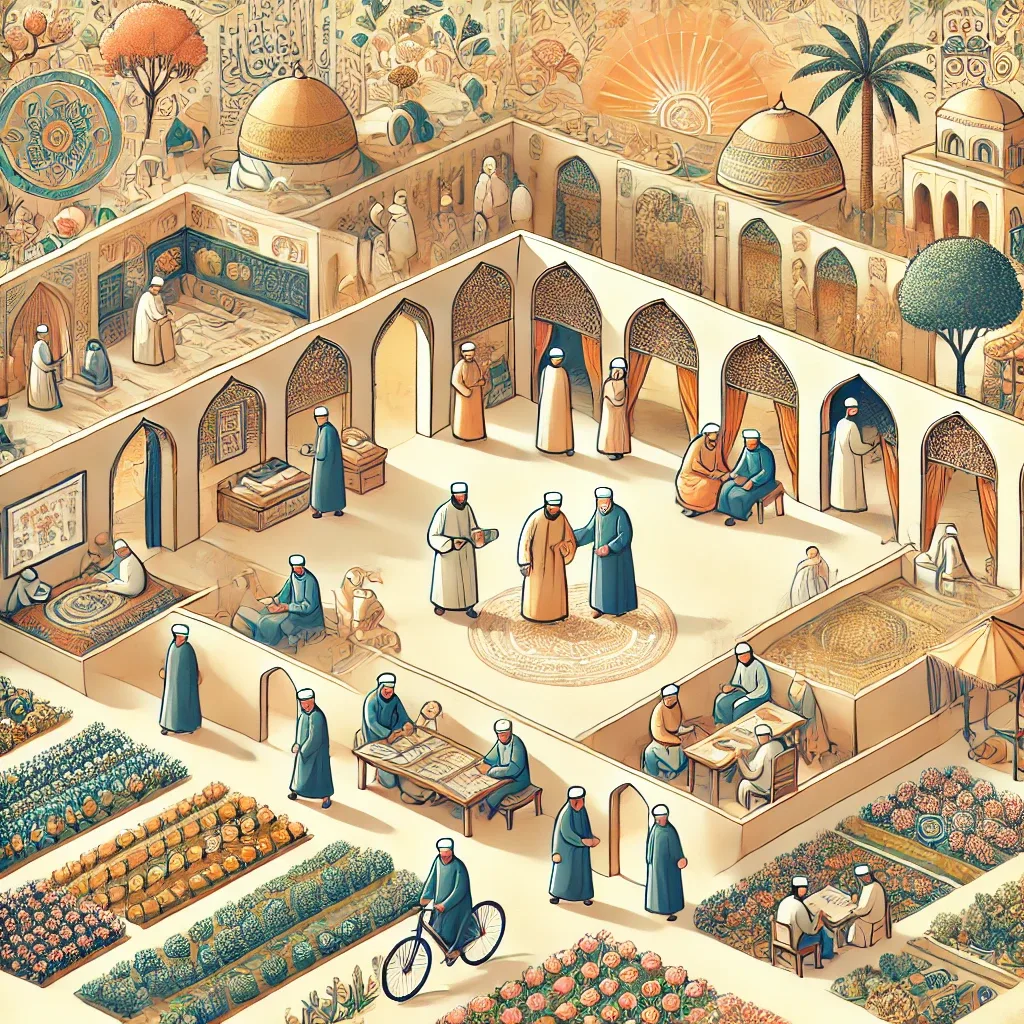Table of Contents
Introduction to the Era of the Rightly Guided Caliphs
This article marks the beginning of a series exploring Era of the Rightly Guided Caliphs. It invites us to reflect on those remarkable times and explore how these caliphs achieved such lasting greatness. How did they govern a vast state with millions of people from diverse races, religions, and languages, ensuring justice for all? How did they remain humble and unaffected by the allure of palaces, grand architecture, and luxurious surroundings, despite coming from the humble deserts of the Arabian Peninsula? How did they lead people from darkness to light in one of the most rapid and extraordinary conquests in history? Click here to explore the entire series.
Someone might ask, “If we already know this, how can it help us in our current reality? Today, we face a world filled with bloodshed, injustice, and suffering. The nation endures weakness, oppression, and defeat in the face of its enemies, with an overwhelming gap between us and our adversaries. We witness calamities daily”.
To change this dire reality, we must first understand how the Rightly Guided Caliphs transformed the Islamic nation from a state of weakness to one of strength, from a regional entity to a global civilization. The Prophet Muhammad (Peace be upon Him) offered timeless guidance in His profound advice:
“You must follow My Sunnah and the Sunnah of the Rightly Guided Caliphs after Me; hold on to it with your molar teeth”1
This invaluable counsel cannot be implemented unless we understand the way of the Rightly Guided Caliphs and how they lived their Sunnah.
Who Are the Caliphs and What Is Their Sunnah?
The term “Khulafaa'” (Caliphs) is the plural of “Khalifah” (Caliph). But what does “Caliph” mean? Scholars explain that the Caliph is so named because he succeeds the Prophet (Peace be upon Him) in His mission. And what is that mission? It is to safeguard the religion and govern the world in accordance with it. The Prophet (Peace be upon Him) was entrusted with establishing, preserving, and strengthening the religion, while also managing the worldly affairs of Muslims in harmony with divine guidance.
Therefore, the Muslim ruler was called the “Caliph” because he succeeded the Messenger of ALLAH in fulfilling this responsibility. The Imamate, as defined by scholars, refers to this succession of Prophethood, tasked with protecting the religion and administering worldly matters. This is the essence of what it means to be a Caliph.

But did the Rightly Guided Caliphs have their own Sunnah (way)? Wasn’t the religion already perfected during the Prophet’s time, as ALLAH revealed:
“This day I have perfected for you your religion and completed MY favor upon you and have approved for you Islām as religion“2
(Suraat ‘Al-Maa’idah, 5:3)
Some might wonder, “Why should we study the lives of Abu Bakr, Umar, Uthman, and Ali, when the religion was completed during the Prophet’s era?“
In truth, the Prophet’s instruction—“You must follow my Sunnah and the Sunnah of the Rightly Guided Caliphs after me“—is part of the religion’s completeness. It highlights that the perfection of Islam includes the Prophet’s guidance, advice, and command to adhere to the Sunnah of the Rightly Guided Caliphs. But why is this so important?
The Importance of Following the Sunnah of the Rightly Guided Caliphs
Firstly, the Sunnah of the Rightly Guided Caliphs primarily refers to their approach to governance and politics. They did not introduce new religious teachings regarding rituals, acts of worship, or interpersonal transactions; these were already firmly established by the Prophet (Peace be upon Him).
However, the Prophet (Peace be upon Him) had unique attributes that no other leader could possess. For instance, He was chosen directly by ALLAH Almighty, not by the people. In His absence, Muslims needed to understand how to select their leaders, since no new Prophet would come, and no divine revelation would guide the process of choosing a ruler. Learning from the lives of the Rightly Guided Caliphs—who were human and not Prophets—teaches us how Muslims can identify and appoint their leaders in such circumstances.
Secondly, the Prophet (Peace be upon Him) was directly connected to revelation. If He ever made a less preferable decision or an error in policy, divine revelation would immediately correct it. However, ALLAH reminds us in the Qur’an:
“Indeed, You are to die, and indeed, they are to die.“3
(Suraat ‘Az-Zummar, 39:30)
With the cessation of revelation after the Prophet’s passing, Muslims needed to know how to govern themselves without the guidance of divine correction. This is why the Rightly Guided Caliphs serve as an essential model. They offer a practical, human example of leadership that is disconnected from revelation but deeply rooted in the principles of Islam, providing Muslims with a framework to emulate in their governance.
Thirdly, as a Prophet (Peace be upon Him) connected to divine revelation, no Muslim had the right to oppose the Prophet’s judgments or decisions. Any opposition that escalated to rebellion or fighting against Him was not merely dissent; it constituted disbelief, as such an act directly challenged the bearer of the religion. The Prophet (Peace be upon Him) was the divinely chosen representative of Islam.
With the passing of the Prophet (Peace be upon Him), Muslims needed a practical example to follow in His absence. A human ruler, unlike the Prophet (Peace be upon Him), is not connected to revelation and makes decisions based on opinion and consultation. Such a ruler may be correct or may err, and Muslims must learn how to interact with, oppose, or even rebel against such leadership when necessary. These considerations did not exist during the Prophet’s time because of His unique status.
Therefore, a period of human leadership was essential—one that provided Muslims with a model for governance, decision-making, and managing opposition in the absence of divine guidance. This is why the Prophet (Peace be upon Him) advised His followers to adhere to the Sunnah of the Rightly Guided Caliphs. It reflects the completeness of the religion, offering a framework for Muslims to navigate leadership and governance in a post-Prophetic era.
The Era as Proof of Islam’s Applicability
The era of the Rightly Guided Caliphs stands as proof of Islam’s practicality and its ability to govern the world and organize its affairs according to its values and teachings.
An Italian researcher, Marie Louise Berneri, authored a book examining utopian cities throughout history. In this work, she explores various philosophers’ and reformers’ visions of the ideal city, from Plato’s Republic to Thomas More’s Utopia, along with many other models from both Eastern and Western philosophies. Her conclusion is striking: not a single one of these utopian concepts was ever realized. Even when some of these philosophers had the opportunity to implement their ideas, none succeeded in transforming their idealized visions into a practical reality.
In contrast, the period of the Rightly Guided Caliphate, which spanned 30 years, offers a real-life example of an ideal system applied on a large scale. During this time, the Rightly Guided Caliphs governed approximately a third of the known ancient world. Their state stretched from the gates of India, Armenia, and Azerbaijan in the east, to the far reaches of Tunisia and Nubia in the west, encompassing the entire Arabian Peninsula. Despite the vastness of this territory and the diversity of its people, the caliphs managed to rule with justice and fairness.

This period serves as the most compelling evidence that Islam is not just a theoretical framework but a practical model for governance. The Islamic state of that era demonstrated its ability to unite millions under its values, overcoming differences in culture, language, and background. Although later Islamic governance did not fully maintain the idealism of the Rightly Guided Caliphate, this foundational period remains a testament to Islam’s applicability as a global system that was not only envisioned but lived and experienced.
Understanding the Spirit of Islamic Civilization Through This Era
An essential feature of the Era of the Rightly Guided Caliphs is its duration of 30 years, as foretold by the Prophet (Peace be upon Him):
“The Caliphate after me is 30 years“4
These three decades witnessed a range of events and transformations that reflected the various stages of a state’s development.
The foundational period unfolded during the time of Abu Bakr (may ALLAH be pleased with him). The era of strength, prosperity, and growth occurred under the leadership of Umar and Uthman (may ALLAH be pleased with them). Meanwhile, the period of trials, internal crises, and conflicts among Muslims took place during the later years of Uthman’s caliphate and throughout Ali’s caliphate (may ALLAH be pleased with all of them).
This era, with its diversity of challenges and successes, serves as a comprehensive model for the Islamic state in every stage of its journey. Whether Muslims find themselves in a phase of foundation, expansion, prosperity, or facing crises, decline, or war, the jurisprudence of the Rightly Guided Caliphs offers timeless guidance for managing their present affairs.
Moreover, the era of the Rightly Guided Caliphs shields Muslims from the confusion of competing ideologies and conflicting philosophies. Those familiar with Western thought recognize the tangled web of ideas and concepts that lack a clear, sacred foundation. Without an infallible text or a definitive historical model to rely upon, Western philosophies often flounder. They transition from feudalism to capitalism, flirt with communism, adopt liberalism, and frequently create terms like “post-this” or “post-that” to signal an end to one idea without clarity on what should follow. This constant uncertainty reflects a deep-rooted confusion.
In contrast, Islamic thought is anchored in the infallible guidance of the Quran and Sunnah and is further supported by the practical example of the Rightly Guided Caliphs. Their choices and Sunnah are not just historical records but obligatory guides for Muslims. This clarity and structure protect Islamic thought from the disorientation prevalent in other ideologies, providing a firm foundation for both governance and personal conduct.
The era of Abu Bakr, for instance, introduced critical issues such as the process of selecting a Caliph and whether consultation (Shura) is merely advisory or binding. Umar’s time brought new challenges, including managing conquests, dealing with defeated peoples, organizing state affairs, and addressing matters of wealth distribution. During Uthman’s caliphate, issues like multiple candidates for leadership and the handling of opposition—both peaceful and armed—arose. These experiences helped establish enduring principles for Muslims, such as the fundamental need for authority to uphold religion.

One key lesson is that religion must operate within a state framework. This is evident in how the Companions (may ALLAH be pleased with them) chose a Caliph even before the burial of the Messenger of ALLAH (Peace be upon Him). This act underscored the urgency of appointing a leader, which became a recognized obligation. Additionally, none of the Rightly Guided Caliphs allowed more than three days to pass after the death of the previous Caliph before the Muslim community had chosen a successor.
As a result, several principles emerged as consensuses from the practices of the Rightly Guided Caliphs. These include the necessity of authority for the preservation of religion, the urgency of appointing a Caliph, engaging in Jihad in the way of ALLAH, safeguarding people’s faith, and establishing justice. These constants provide a clear and unwavering framework for Muslims to follow, offering stability and guidance in contrast to the uncertainty and confusion experienced by others who lack such a model to emulate.
Reviving the Legacy for a Brighter Future
Understanding the Era of the Rightly Guided Caliphs allows us to appreciate the essence of Islamic civilization. Unlike civilizations centered on grand structures or material achievements, Islamic civilization places its focus on humanity—on developing people before building monuments. The Prophet (Peace be upon Him) said:
“The best of people are My generation, then those who follow them, then those who follow them“5
When asked about the golden age of Islamic civilization, some might point to the Andalusian or Abbasid eras, highlighting their advancements in architecture, art, sciences, and technology. However, the hadith settles this matter: “The best of people are My generation, then those who follow them, then those who follow them“. The Era of the Rightly Guided Caliphate concluded without monumental buildings, grand palaces, elaborate decorations, or notable technological progress. This teaches us that the foundation of Islamic civilization is not in its physical achievements but in its focus on human development, values, and justice.
During this era, the justice of the Rightly Guided Caliphs was evident in their governance. A man could challenge the Caliph or voice his opposition without fear of losing his rights. For instance, a stranger could stand in the same row as Amir al-Mu’minin (the Commander of the Faithful), Umar, or even assassinate him, as tragically happened. Similarly, during Uthman’s time (may ALLAH be pleased with him), someone could attempt to kill the Caliph and still be pardoned by him. Opposition was not met with the stripping of rights, showcasing the remarkable justice and humanity that defined this period.
Islamic civilization prioritizes human values over rulers, architecture, and grand construction. This focus sets it apart, as the moral evaluation of later Islamic periods, such as the Abbasid, Ottoman, and Andalusian eras, often leans negative. While the scientific and intellectual advancements of those times are acknowledged, when Muslims yearn for a return to past glory, they aspire to the Era of the Rightly Guided Caliphs—not the Umayyad, Abbasid, or Ottoman periods.

The Era of the Rightly Guided Caliphs teaches us profound lessons. First, it demonstrates the practical applicability of Islam and its ability to govern a vast, diverse state with justice. Second, it shows that governance can be rooted in ethics, without a disconnect between politics and morality in the Muslim conscience. Third, it proves that Muslims, even in the absence of revelation and the Prophet (Peace be upon Him), are capable of establishing a global civilization and managing a great state.
In Islamic history, many figures of prominence are often judged harshly by Muslim historians and scholars, even though, in other contexts, they might have been considered founders or great leaders. Why? Because Muslims evaluate their historical figures by comparing them to the unparalleled example of the Rightly Guided Caliphs. This ethical and normative standard shapes their view of greatness, in contrast to other civilizations where power and material achievements often serve as the sole measure of a leader’s legacy.
It is well-known what the man who killed Umar’s brother (may ALLAH be pleased with them) once said to Umar. When Umar told him, “By ALLAH, I do not love you until the earth loves blood”, the man replied, “Will that prevent me from any of my rights?” Umar said, “No, by ALLAH“. The man responded,
“Then love or hate as you will; only women grieve over love”
This was an era where individuals could sleep peacefully in their homes, secure in the knowledge that their rights and livelihood were protected, regardless of their political stance or even their opposition to the Caliph. Remarkably, even if a person had killed the Caliph, he could still live with the assurance of his full rights under the law.
The Era of the Rightly Guided Caliphate truly represents the golden age of Islamic civilization. It is the era that brought the teachings of Islam into practical governance and stands as the model Muslims strive to emulate in their lives. By understanding and internalizing this era, we can aspire to revive the strength of this religion and transition from the current state of weakness to one of victory and empowerment, by the will of ALLAH.
In the following articles, we will delve into specific aspects of this era, highlighting and comparing them with the principles of secular states and Western civilization. This comparison will reveal the profound differences, for, as it is said, “By their opposites, things are distinguished“.
I ask ALLAH, the Most Blessed and Exalted, to teach us what benefits us, to make us benefit from what HE teaches us, and to increase us in beneficial knowledge.
Sources:
- Mohamed Elhamy. محمد إلهامي | عصر الخلافة الراشدة | 1. ما الذي يهمنا في فترة الخلافة الراشدة. YouTube Video.

